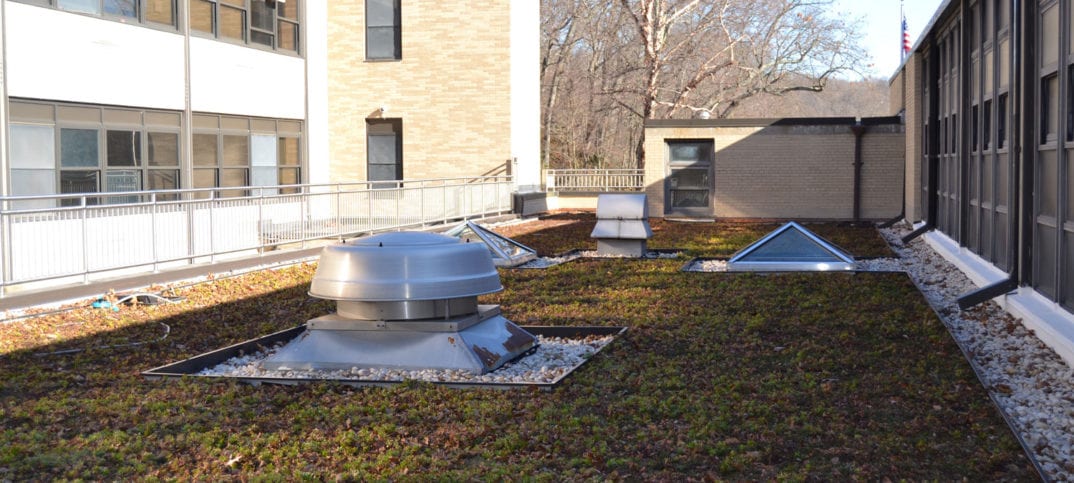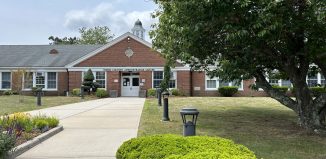By Alex Petroski
A facilities administrator in the Port Jefferson School District is doing his part to reduce the district’s impact on the quality of the Long Island Sound’s water.
Finding innovative ways to improve and protect Long Island’s water is a priority for state and county governments, environmental groups, businesses dependent on marine life and concerned residents. Last year, Fred Koelbel, Port Jeff’s facilities administrator, was able to secure a grant funded through the state’s Environmental Protection Fund as a part of the Department of Environmental Conservation’s Water Quality Improvement Projects program.
The grant paid for the district to install a bed of vegetation on a 3,400 square foot portion of the high school’s roof to serve as a basin to catch and treat stormwater prior to discharging it into the village’s stormwater system, according to Aphrodite Montalvo, a spokeswoman for the DEC.
“It rains on this, the water filters through and is held in the growing medium,” Koelbel explained while looking over the dual-purposed roof, which will be used for middle school science lessons beginning in the spring in addition to its environmental benefits. “It’s a drop in a bucket, but it’s meant to be a demonstration project. It demonstrates to the kids what the potential is; it demonstrates to the community what the potential is if you did this on a larger scale.”
Koelbel said he frequently monitors grants made available by New York State, and after being denied for this particular project once, the district was approved to receive the funding in 2016. The total cost of the project was about $275,000, though the grant covered all but about $68,000. Koelbel added that the area of the building was in need of a new roof anyway, and it would have cost the district more than $68,000 to install a conventional roof.
“It’s a really great thing. This is the kind of stuff I like to do.”
— Fred Koelbel
“It was a win-win because it gave us all of the benefits of the green roof, plus saved us money on the installation,” he said. The previous roof was made of a material that reflected sunlight and caused a glare and higher temperatures in a wing of classrooms in the building’s middle school, which is adjoined to the high school. Koelbel said the district first installed air conditioners to alleviate the problem, and then put a reflective film over the windows, but the green roof provides much greater benefits in addition to fixing an existing problem.
“The Earl L. Vandermeulen High School green roof is an excellent example of New York State’s statewide investments in green infrastructure,” Montalvo said in an email. “The green roof will reduce the overall pollutant loading entering Port Jefferson Harbor, as well as educate students and the public on the benefits of green infrastructure.”
Port Jefferson is the only district on Long Island to install a green roof. Koelbel said some districts have reached out to him with questions about the project, though none have visited yet. He added he has plans to host a workshop in the near future for Port Jefferson Village roofing contractors and commercial property owners who might be in need of a new roof to advocate for the installation of more green roofs.
“For the next generation, this is something we do now,” Koelbel said. The district also has solar panels installed on some buildings, which are used to teach lessons about energy use. They also replaced many lighting fixtures with LED lighting in the past. Koelbel said he was proud of the example the district is setting for students about reducing environmental impact.
“When you’re doing public works type stuff, getting innovative sometimes is difficult, so the fact that we could set it up this way where it was a savings to the district over what we would have done if we just did what we had always done, and now we get to demonstrate the benefits to the students — it’s a real plus,” he said. “It’s a really great thing. This is the kind of stuff I like to do.”







